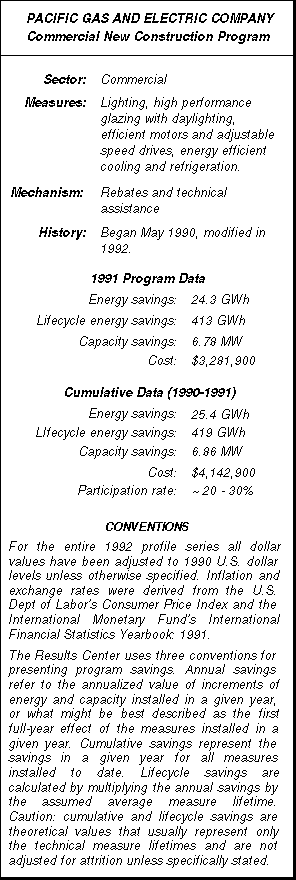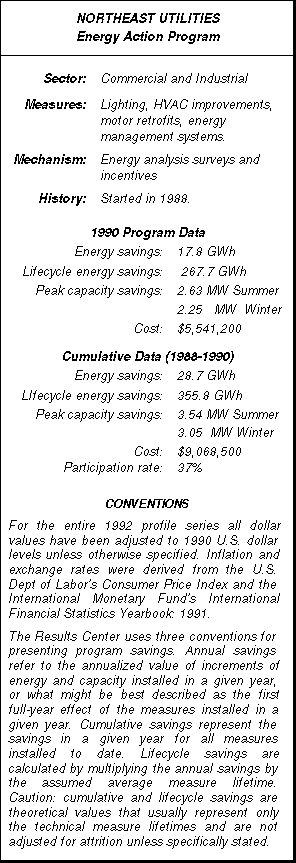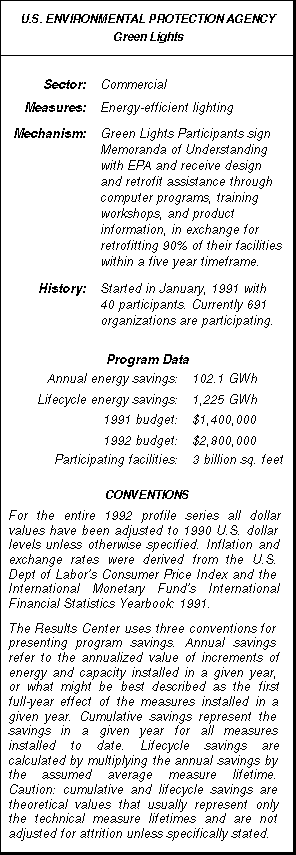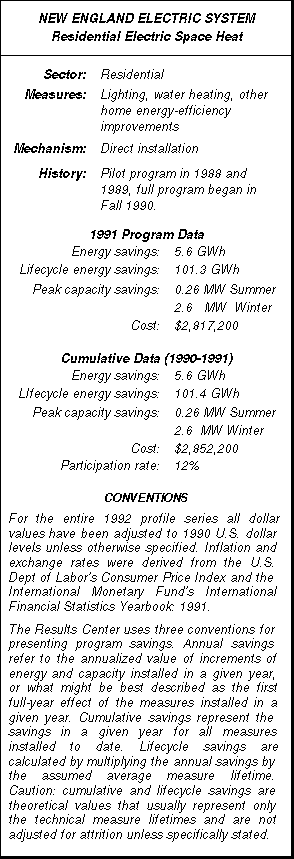EXECUTIVE SUMMARY
 PG&E first offered its Commercial New Construction program in May 1990 in an effort to encourage the design and construction of new nonresidential buildings that exceed the California Energy Commission’s Title 24 standards by 10% or more. (Note that under the California energy code major remodels qualify as "new" construction.) The program is designed to supplement Title 24 standards, increase market acceptance of advanced energy-efficient building technologies and materials, and prevent lost opportunities in new building construction. PG&E provides information assistance to help builders, architects, engineers, and developers early in the planning and design stages of new commercial buildings to maximize the level of achievable savings. In addition, PG&E provides financial incentives to program participants. Rebates of up to 100% of the incremental cost for demonstrated improvements over Title 24 standards are available in the following building categories: lighting, high performance glazing with daylighting, motors and adjustable speed drives, cooling, and energy-efficient refrigeration.
PG&E first offered its Commercial New Construction program in May 1990 in an effort to encourage the design and construction of new nonresidential buildings that exceed the California Energy Commission’s Title 24 standards by 10% or more. (Note that under the California energy code major remodels qualify as "new" construction.) The program is designed to supplement Title 24 standards, increase market acceptance of advanced energy-efficient building technologies and materials, and prevent lost opportunities in new building construction. PG&E provides information assistance to help builders, architects, engineers, and developers early in the planning and design stages of new commercial buildings to maximize the level of achievable savings. In addition, PG&E provides financial incentives to program participants. Rebates of up to 100% of the incremental cost for demonstrated improvements over Title 24 standards are available in the following building categories: lighting, high performance glazing with daylighting, motors and adjustable speed drives, cooling, and energy-efficient refrigeration.
Given the time lag between building design and actual construction, savings are presented each year in terms of "actual" for which rebates are paid, and "committed." In 1991, the program’s first full year, PG&E attributed 6.8 MW in actual demand savings and 19.4 MW in committed demand savings to the Commercial New Construction program. Actual energy savings in 1991 were 24.3 GWh and committed energy savings were 72.3 GWh. Incentive payments totalling $1,460,900 were paid out in 1991, while committed payments topped $6 million.
In July of 1992, the California energy code was revised and clarified and allows for prescriptive and performance-based methods of compliance. To match the new energy code requirements, PG&E introduced three new program tracks that parallel the new code compliance requirements and which offer cash incentives for exceeding Title 24 efficiency standards for new construction. The new programs represent an evolution of the PG&E’s original Large and Small Commercial New Construction Incentive Programs which started in 1990. Two of the three new programs tracks are prescriptive methods, the "Prescriptive Express Program" and "Prescriptive Plus", both of which require installation of specific energy-efficient technologies. The third track is a performance method called the "Performance by Design Program", and requires using California Energy Commission computer modeling to establish an allowed energy budget for a new building from which PG&E can determine the incentive appropriate for marginal improvements above the California Energy Code.
[CLICK HERE TO DOWNLOAD THE ENTIRE 22 PAGE PROFILE IN PDF FILE FORMAT]
This profile was produced by

 Northeast Utilities’ Energy Action Program (EAP) offers incentives to large commercial and industrial customers who retrofit existing facilities with energy-efficient equipment in the service territories of both Connecticut Light & Power and Western Massachusetts Electric Company. Non-residential customers whose monthly demand exceeds 250 kW, facilities such as schools and institutional buildings, hospitals, offices, commercial buildings, colleges and universities, and industrial facilities are eligible for the program. EAP’s incentives stimulate lighting retrofits, HVAC improvements, motor retrofits, and the installation of energy management systems. Through EAP, the payback period for retrofit projects is reduced to one to three years.
Northeast Utilities’ Energy Action Program (EAP) offers incentives to large commercial and industrial customers who retrofit existing facilities with energy-efficient equipment in the service territories of both Connecticut Light & Power and Western Massachusetts Electric Company. Non-residential customers whose monthly demand exceeds 250 kW, facilities such as schools and institutional buildings, hospitals, offices, commercial buildings, colleges and universities, and industrial facilities are eligible for the program. EAP’s incentives stimulate lighting retrofits, HVAC improvements, motor retrofits, and the installation of energy management systems. Through EAP, the payback period for retrofit projects is reduced to one to three years. EPA’s Green Lights program was officially launched on January 16, 1991 to prevent pollution by encouraging organizations to use energy-efficient lighting technologies in their offices, factories, stores, and warehouses. The Green Lights program offers a substantial opportunity to organizations to prevent pollution and to do so at a profit. If energy-efficient lighting were used wherever profitable, the nation’s demand for electricity would be cut by more than 10%, leading to 4% to 7% reductions in total emissions of carbon dioxide, sulfur dioxide, and nitrogen oxides. In terms of carbon dioxide, EPA finds that this reduction in emissions would be the equivalent of removing 44 million cars from the road!
EPA’s Green Lights program was officially launched on January 16, 1991 to prevent pollution by encouraging organizations to use energy-efficient lighting technologies in their offices, factories, stores, and warehouses. The Green Lights program offers a substantial opportunity to organizations to prevent pollution and to do so at a profit. If energy-efficient lighting were used wherever profitable, the nation’s demand for electricity would be cut by more than 10%, leading to 4% to 7% reductions in total emissions of carbon dioxide, sulfur dioxide, and nitrogen oxides. In terms of carbon dioxide, EPA finds that this reduction in emissions would be the equivalent of removing 44 million cars from the road! The New England Electric System’s (NEES) Residential Electric Space Heat program (RESH) is a direct installation program that provides energy efficiency improvement measures and information at no cost or low cost to residential customers with electric space heat. Of NEES’s 1.1 million residential accounts served by three retail companies, just 5% are moderate and high-use electric heat customers. The RESH program was designed to capture energy savings for these customers who live in one to four-family buildings.
The New England Electric System’s (NEES) Residential Electric Space Heat program (RESH) is a direct installation program that provides energy efficiency improvement measures and information at no cost or low cost to residential customers with electric space heat. Of NEES’s 1.1 million residential accounts served by three retail companies, just 5% are moderate and high-use electric heat customers. The RESH program was designed to capture energy savings for these customers who live in one to four-family buildings.